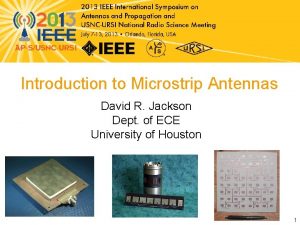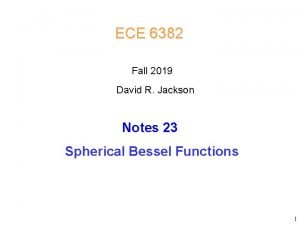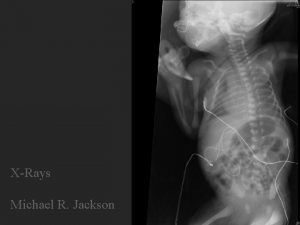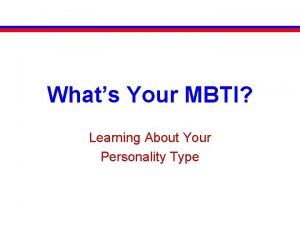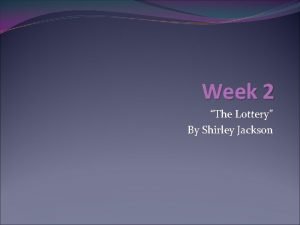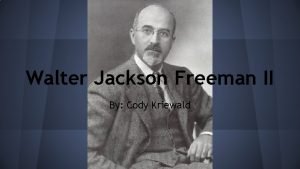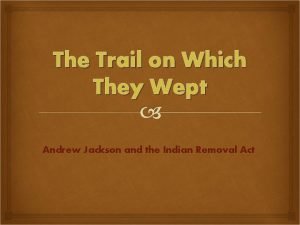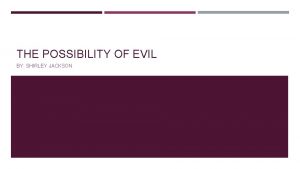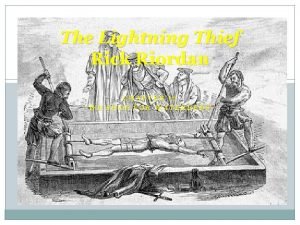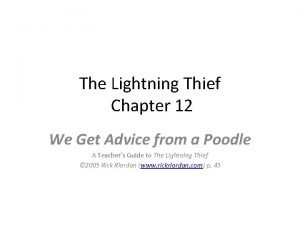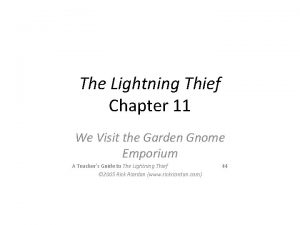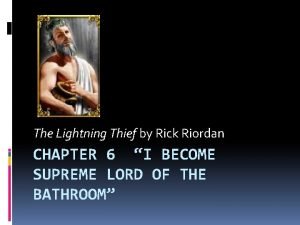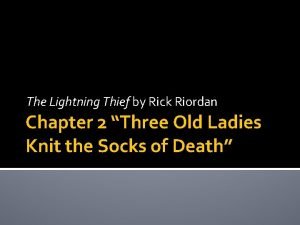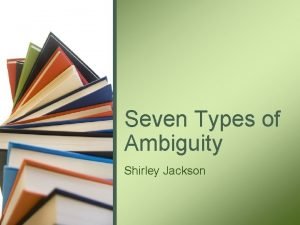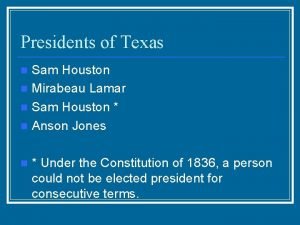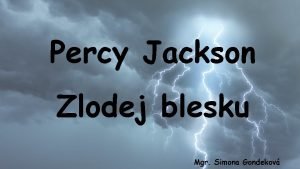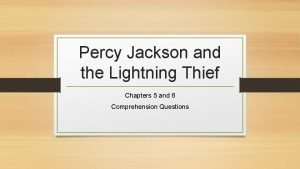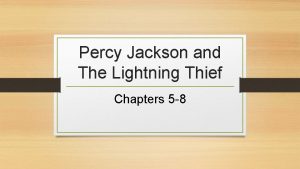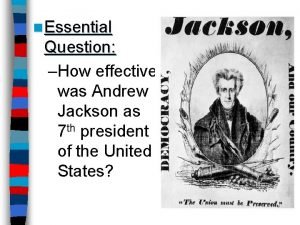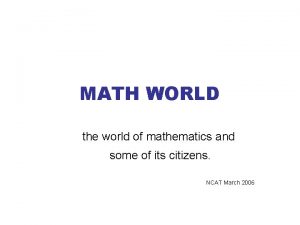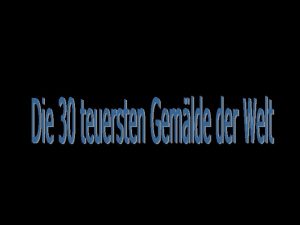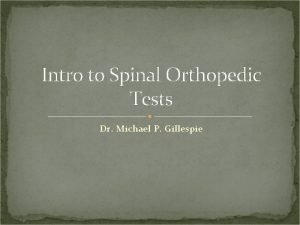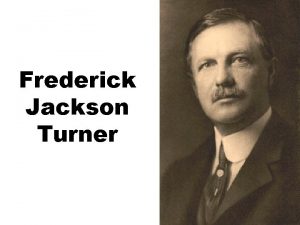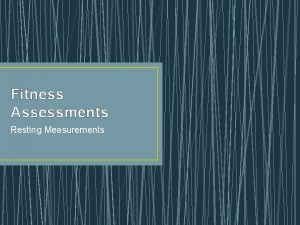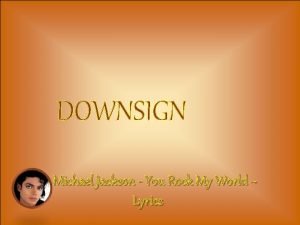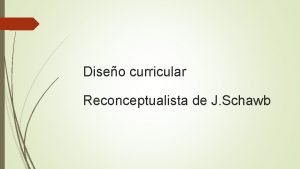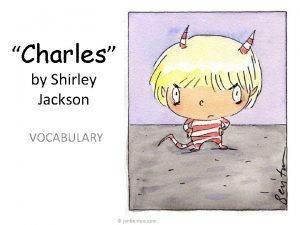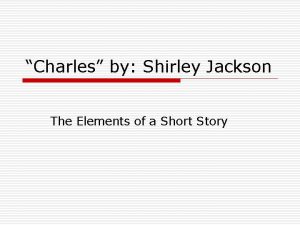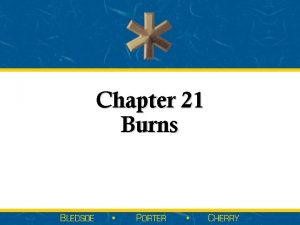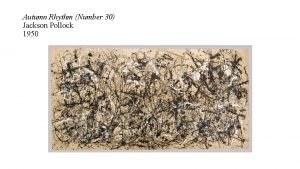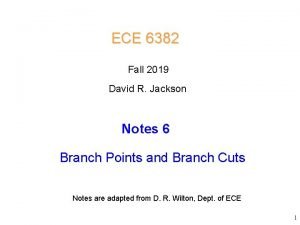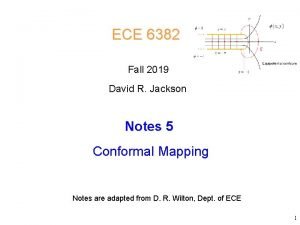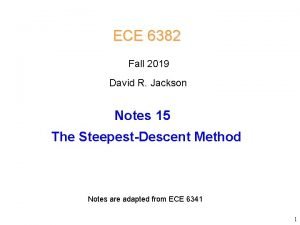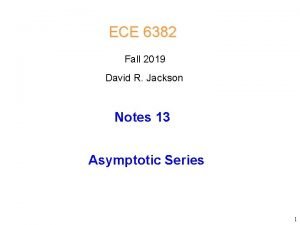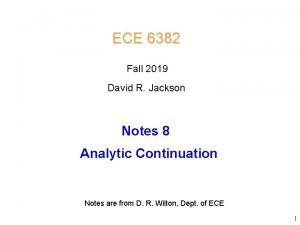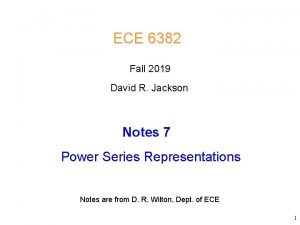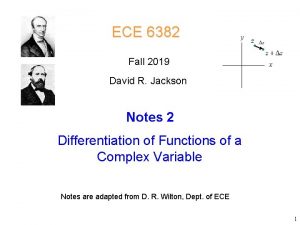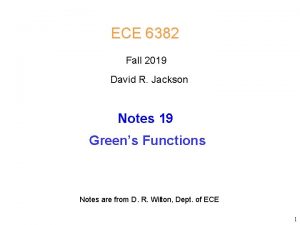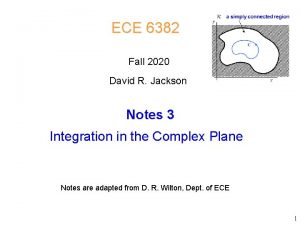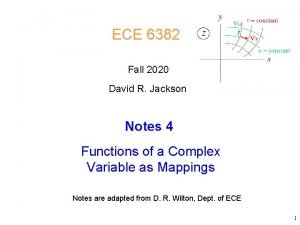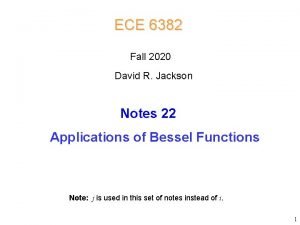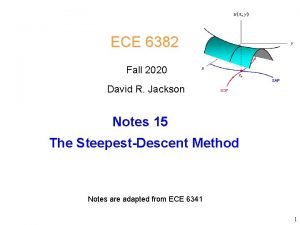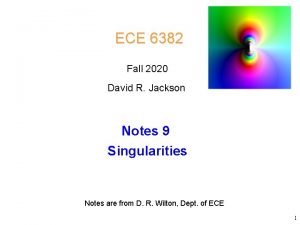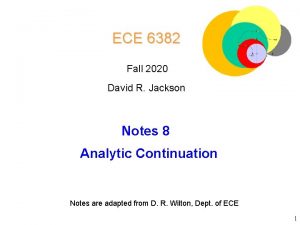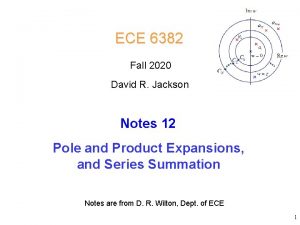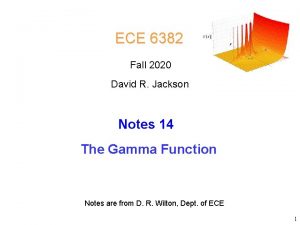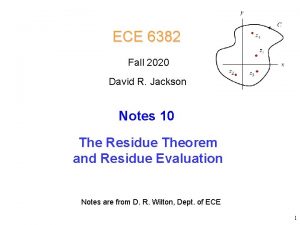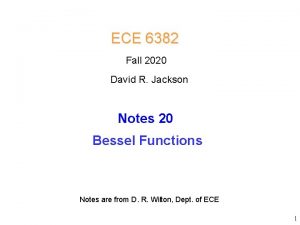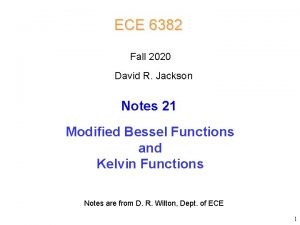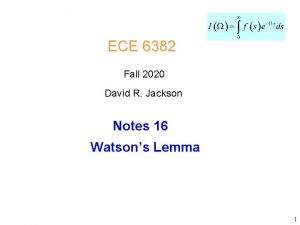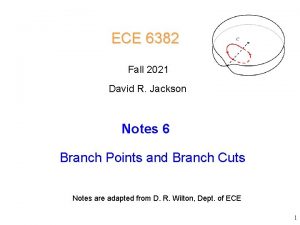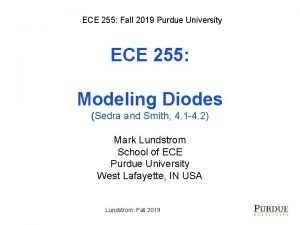ECE 6382 Fall 2019 David R Jackson Notes

























































- Slides: 57

ECE 6382 Fall 2019 David R. Jackson Notes 22 Bessel Function Examples Note: j is used in this set of notes instead of i. 1

Impedance of Wire A round wire made of conducting material is examined. 0 , 0 1 , a z The wire has a conductivity of . We neglect the z variation of the fields inside the wire (|kz| << |k 1|). 2

Impedance of Wire (cont. ) Inside the wire: (The field must be finite on the z axis, no variation. ) Note: This assumes that the wire is fed (excited) from the outside. 3

Impedance of Wire (cont. ) Hence, we have where (skin depth) We can also write the field as (J 0 is an even function. ) 4

Impedance of Wire (cont. ) Recall: Therefore, we can write 5

Impedance of Wire (cont. ) The current flowing in the wire is Hence 6

Impedance of Wire (cont. ) The impedance per unit length defined as: Hence, Note: This assumes that the wire is fed (excited) from the outside. 7

Impedance of Wire (cont. ) We have the following helpful integration identity: Hence where 8

Impedance of Wire (cont. ) Hence, we have where 9

Impedance of Wire (cont. ) At low frequency (a << ): (ECE 3318) At high frequency (a >> ): (ECE 6340) where 10

Circular Waveguide The waveguide is homogeneously filled, so we have independent TEz and TMz modes. TMz mode: a r z Note: The relative permittivity could be complex (due to loss). 11

Circular Waveguide (cont. ) (1) variation (uniqueness of solution) Choose 12

Circular Waveguide (cont. ) (2) The field should be finite on the z axis is not allowed 13

Circular Waveguide (cont. ) (3) B. C. ’s: Hence 14

Circular Waveguide (cont. ) Jn(x) Plot shown for n 0 xn 3 xn 1 Note: xn 0 = 0 is not included since x xn 2 (trivial solution). 15

Circular Waveguide (cont. ) TMnp mode: 16

Cutoff Frequency: TMz (We assume a lossless dielectric for the cutoff discussion. ) 17

Cutoff Frequency: TMz (cont. ) xnp values pn 0 1 2 3 4 5 1 2. 405 3. 832 5. 136 6. 380 7. 588 8. 771 2 5. 520 7. 016 8. 417 9. 761 11. 065 12. 339 3 8. 654 10. 173 11. 620 13. 015 14. 372 4 11. 792 13. 324 14. 796 TM 01, TM 11, TM 21, TM 02, … 18

TEz Modes In this case the boundary condition is different: 19

TEz Modes (cont. ) Set At he boundary, the first term on the RHS is zero: Hence 20

TEz Modes (cont. ) Jn' (x) Plot shown for n 1 x'n 3 x'n 1 x'n 2 x Note: p = 0 is not included (see next slide). 21

TEz Modes (cont. ) (trivial soln. ) p=0 This generates other field components that are zero; the resulting field that only has Hz violates the magnetic Gauss law. 22

Cutoff Frequency: TEz (We assume a lossless dielectric for the cutoff discussion. ) 23

Cutoff Frequency: TEz x´np values pn 0 1 2 3 4 5 1 3. 832 1. 841 3. 054 4. 201 5. 317 5. 416 2 7. 016 5. 331 6. 706 8. 015 9. 282 10. 520 3 10. 173 8. 536 9. 969 11. 346 12. 682 13. 987 4 13. 324 11. 706 13. 170 TE 11, TE 21, TE 01, TE 31, ……. . 24

TE 11 Mode The dominant mode of circular waveguide is the TE 11 mode. Electric field Magnetic field (from Wikipedia) TE 10 mode of rectangular waveguide TE 11 mode of circular waveguide The TE 11 mode can be thought of as an evolution of the TE 10 mode of rectangular waveguide as the boundary changes shape. 25

Dielectric Rod z 0 1 a Modes are hybrid* unless: Unknown wavenumber: Note: We can have TE 0 p, TM 0 p modes *This means that we need both Ez and Hz. 26

Dielectric Rod (cont. ) <a Representation of potentials inside the rod: where (kz is unknown) 27

Dielectric Rod (cont. ) To see choice of sin/cos, examine the field components (for example E ): From the Appendix: 28

Dielectric Rod (cont. ) >a Representation of potentials outside the rod: Use where Note: 0 is interpreted as a positive real number in order to have decay radially in the air region. 29

Dielectric Rod (cont. ) Useful identity: Another useful identity: Kn (x) = modified Bessel function of the second kind. 30

Dielectric Rod (cont. ) The modified Bessel functions decay exponentially. 31

Dielectric Rod (cont. ) Hence, we choose the following forms in the air region ( > a): 32

Dielectric Rod (cont. ) Match Ez , Hz , E , H at = a: Example: or so 33

Dielectric Rod (cont. ) To have a non-trivial solution, we require that kz = unknown (for a given frequency ) 34

Dielectric Rod (cont. ) Dominant mode (lowest cutoff frequency): HE 11 (fc = 0) This is the mode that is used in fiber-optic guides (single-mode fiber). 35

Dielectric Rod (cont. ) Sketch of normalized wavenumber At higher frequencies, the fields are more tightly bound to the rod. 36

Scattering by Cylinder A TMz plane wave is incident on a PEC cylinder. y z a TMz qi x Top view of plane wave x 37

Scattering by Cylinder (cont. ) From the plane-wave properties, we have The total field is written as the sum of incident and scattered parts: For a: Note: For any wave of the form exp(-jkzz), all field components can be put in terms of Ez and Hz. This is why it is convenient to work with Ez. Please see the Appendix. 38

Scattering by Cylinder (cont. ) We first put into cylindrical form using the Jacobi-Anger identity*: where Assume the following form for the scattered field: *This was derived previously using the generating function. 39

Scattering by Cylinder (cont. ) At Hence This yields or 40

Scattering by Cylinder (cont. ) We then have and The other components of the scattered field can be found from the formulas in the Appendix. 41

Current Line Source z TMz : Conditions: 1) Allowed angles: 2) Symmetry: 3) Radiation condition: 4) Symmetry: Hence: 42

Current Line Source (cont. ) Our goal is to solve for the constant A: z I 0 Choose a small circular path: C 43

Current Line Source (cont. ) From Ampere’s law and Stokes’ theorem: z I 0 C Examine the last term (displacement current): where 44

Current Line Source (cont. ) Hence so Therefore Now use 45

Current Line Source (cont. ) Hence z or I 0 so C Thus This is the EM Green’s function for the field Ez due to a line source. 46

Scattering From a Line Current The line source now illuminates an infinite PEC cylinder. z a y x We use the addition theorem to translate the Hankel function to the z axis. 47

Scattering From a Line Current (cont. ) The addition theorem tells us: We use the first form, since the cylinder at = a is inside the circle on which the line source resides (radius 0). 48

Scattering From a Line Current (cont. ) Incident field: Assume a form for the scattered field: 49

Scattering From a Line Current (cont. ) Boundary Conditions ( = a): Hence or 50

Scattering From a Line Current (cont. ) Final result: z a Scattered field y x 51

Scattering From a Line Current (cont. ) Extension: z a Scattered field y x Note: For complex kz, we can use analytic continuation to define the square root function. 52

Scattering From a Line Current (cont. ) Final result: z a Scattered field y x 53

Appendix For any wave of the form exp(-jkz z), all field components can be put in terms of Ez and Hz. 54

Appendix (cont. ) These may be written more compactly as where 55

Appendix (cont. ) In cylindrical coordinates we have This allows us to calculate the field components in terms of Ez and Hz in cylindrical coordinates. 56

Appendix (cont. ) In cylindrical coordinates we then have 57
 The life and legacy of andrew jackson worksheet
The life and legacy of andrew jackson worksheet David r jackson
David r jackson David r. jackson
David r. jackson Conversion notes brutes en notes standard wisc 5
Conversion notes brutes en notes standard wisc 5 Michael jackson x ray
Michael jackson x ray Movie about andrew jackson
Movie about andrew jackson Kevin costner mbti
Kevin costner mbti What was the purpose of the sibley commission
What was the purpose of the sibley commission The lottery shirley jackson questions
The lottery shirley jackson questions Walter freeman ii
Walter freeman ii General jackson slaying the many headed monster
General jackson slaying the many headed monster Michael jackson psychodynamic
Michael jackson psychodynamic Andrew jackson trail of tears map
Andrew jackson trail of tears map The possibility of evil shirley jackson
The possibility of evil shirley jackson Discussion questions for the lottery
Discussion questions for the lottery Chapter 17 percy jackson and the lightning thief
Chapter 17 percy jackson and the lightning thief What does percy use to bribe charon
What does percy use to bribe charon We get advice from a poodle
We get advice from a poodle Chapter 11 percy jackson the lightning thief
Chapter 11 percy jackson the lightning thief The lightning thief chapter 6 pdf
The lightning thief chapter 6 pdf Chapter 2 summary of percy jackson the lightning thief
Chapter 2 summary of percy jackson the lightning thief Jackson rees intersurgical
Jackson rees intersurgical Peeples middle school jackson ms
Peeples middle school jackson ms Sa sd
Sa sd Seven types of ambiguity shirley jackson
Seven types of ambiguity shirley jackson Loulou lemmon
Loulou lemmon Ppr superior
Ppr superior Mirabeau lamar campaign poster
Mirabeau lamar campaign poster Percy jackson zloděj blesku osnova
Percy jackson zloděj blesku osnova What happened in chapter 22 of the lightning thief
What happened in chapter 22 of the lightning thief Percy jackson artemide
Percy jackson artemide Percy jackson personages
Percy jackson personages Percy jackson seria
Percy jackson seria Percy jackson and the lightning thief dionysus
Percy jackson and the lightning thief dionysus Percy jackson vocabulary chapters 5-8
Percy jackson vocabulary chapters 5-8 Spoils system
Spoils system Maynard jackson drawing
Maynard jackson drawing Trachette jackson
Trachette jackson Jackson gulch reservoir
Jackson gulch reservoir Percy jackson lubimyczytac
Percy jackson lubimyczytac Who is the father of antiseptic surgery
Who is the father of antiseptic surgery Dr. gachet van gogh
Dr. gachet van gogh O'donoghue's orthopedic test
O'donoghue's orthopedic test Todd jackson hockey canada
Todd jackson hockey canada Henry m jackson high school bell schedule
Henry m jackson high school bell schedule Frederick jackson taylor
Frederick jackson taylor Jackson pollock nomogram
Jackson pollock nomogram You rock my world cast
You rock my world cast Joseph j. schwab
Joseph j. schwab Michael jackson pharmacist
Michael jackson pharmacist The day my son laurie started kindergarten
The day my son laurie started kindergarten What is the falling action of the story charles
What is the falling action of the story charles Burn management formula
Burn management formula Theodore bedell jackson county ga
Theodore bedell jackson county ga Bo jackson address
Bo jackson address Dangerous world tour history world tour - hockenheimring
Dangerous world tour history world tour - hockenheimring Wicor buddies
Wicor buddies Jackson pollock number 30
Jackson pollock number 30

